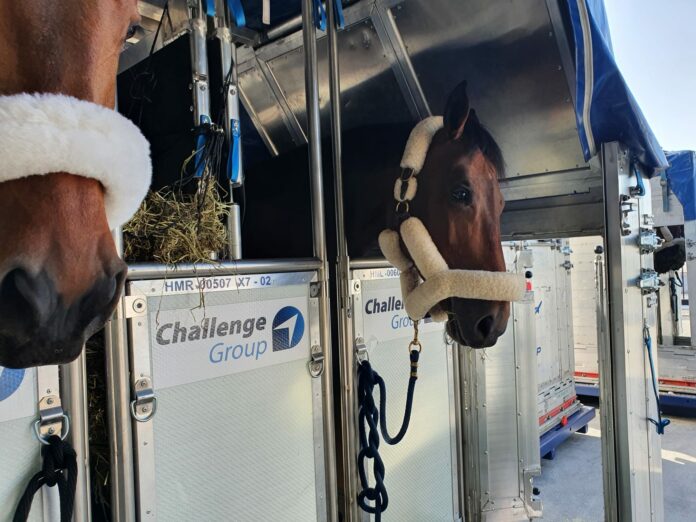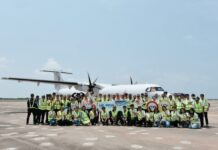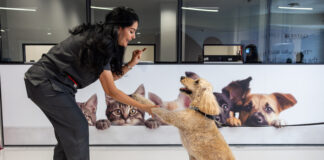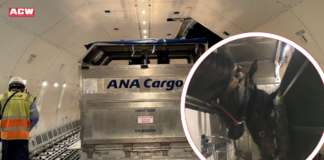

Challenge Group prides itself on excellence, striving to achieve the highest standard in its airfreight operations. With the motto “challenge accepted,” the carrier welcomes all species onboard its aircraft, providing state-of-the-art facilities and a comfortable journey.
Transporting around 7000 horses and 1000 pets each year, Challenge Group works with agents specialising in animal transportation, primarily those based in the United States and the European Union.
“Our motto applies perfectly to this sector when it comes to the operational environment: from delivery to build up, from planning to tarmac operation, loading and offloading, everything should be performed as quickly as possible to preserve the animals’ wellbeing,” Hay Sasson, Chief Operating Officer of Challenge Group, said.
Leading horse carrier
Airfreight is a must for horses. For Challenge Group, this is where its main expertise lies, managing the famous Horse Inn in Liege, Belgium.
At the facility, the horses are able to rest before a long flight. Because the well-being of the animals is a priority for the Group, it has been designed to allow grooms to rest next to their horses when they are present. It is also the acceptance point for horses before loading on the airborne horse stalls.
“Everything is done to avoid stress and reduce the waiting time. It is the same for other animals. They are accepted five hours before the flight to ensure that their trip inside the container is as short as possible,” Sasson highlighted.
The carrier’s Challenge Handling offering reflects this, having been developed with Air Tech Innovations – a unique prototype trailer for the transport of horses. It has been built to transport in a smooth, safe and efficient way all the horses, from one side of the airport to the other.
Showing its position in the industry, Challenge Airlines became the latest company to achieve IATA CEIV Live Animal certification in September, something Sasson described as a “remarkable milestone.”
“The processes are more defined and clearer throughout the cycle, allowing for the increased excellence of the teams. This is a guarantee of quality and above all of safety, which is the first thing we look for when we talk about transporting living beings,” Sasson continued.
READ: Challenge Group: Establishing excellence in Chinese e-commerce
Challenges and opportunities
The development of population and trade in general has contributed to the increase in animal transport. In particular, there is a greater demand for livestock charters. But this leads to many limitations, which are justified, and which concern in particular animal welfare but also logistic and operational challenges with, for example, more required turn around time.
The vertical has a specific seasonality, so the traffic is stable, allowing Challenge Group to plan its schedule.
“The demand is stable as this traffic is a niche market with a regular seasonality,” Sasson said. “After the pandemic, we see that some countries, from a strategic point of view, want to keep sufficient reserves of livestock to be self-sufficient as much as possible.”
“The biggest challenge is probably to be flexible in dealing with unforeseen delays, restrictions imposed by the regulator or the authority, the primary objective being the wellbeing of the animal throughout the journey,” Sasson explained.
READ: Providing the solution to your logistic challenges
Wide range of services
Challenge Group has made specific investments to ensure the highest standard: trained staff, more owned stalls and most important a trailer prototype for a safer and faster transfer of the animals on the tarmac.
“One of our objectives as a group is operational excellence. We therefore hope that other stakeholders will improve their internal standards as much as possible, for the benefit of animal transportation as a whole,” Sasson said.
As a carrier, Challenge has managed a constant number of live animal charters at airline level, not only horses, but also donkeys, rhinos and dogs. The handling of live animals is a controlled and pre-planned process based on risk management and procedures that are controlled by their quality system.
Animal welfare is one of the key factors to consider, if not the first. At Challenge Group, they have made animal transportation one of their core competencies, investing in people, equipment and tools, to achieve the highest standard possible.
As an airline, Challenge must ensure that the right temperature and CO2 level are maintained throughout the flight. In order to ensure optimal transport, specific procedures have been developed to create proper air circulation around the live animal container. In addition, their team uses an environmental control system to ensure the correct ambient temperature and CO2 levels at all times.










